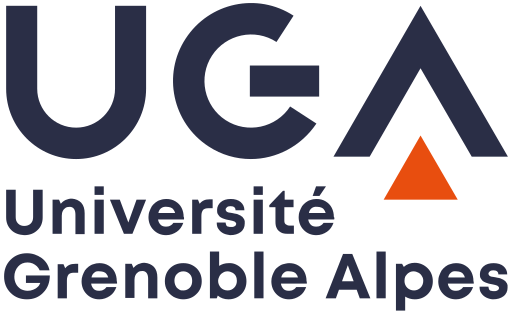Dans ce travail la théorie des foncteurs dérivés (connue pour les foncteurs additifs) est généralisée aux foncteurs arbitraires (non additifs). Pour obtenir cette généralisation on remplace les complexes de la théorie usuelle par des complexes semi-simpliciaux. Soient et deux catégories abéliennes, un foncteur covariant de dans , un objet de et un entier . Alors on appelle résolution (semi-simpliciale) de un “objet semi-simplicial” sur muni d’un isomorphisme et tel que pour , pour . Si de plus est un objet projectif de pour tout , on pose . Supposant que tout objet de soit isomorphe à un quotient d’un objet projectif on prouve que est un foncteur covariant de dans (dérivé gauche de ). Si est additif, le foncteur ne dépend que de et coïncide avec , dérivé gauche de au sens usuel. Si est la catégorie des groupes abéliens et est l’anneau de groupe ou l’algèbre symétrique de , est isomorphe au groupe d’Eilenberg-MacLane.
Soit alors (sans autres restrictions pour et ). Pour tout objet semi-simplicial sur on peut définir la suspension et le morphisme suspension qui donne en particulier
Le morphisme peut être considéré comme une généralisation de la suspension dans les groupes d’Einlenberg-MacLane et ses propriétés principales sont les mêmes que dans ce cas spécial. (Les “éléments décomposables” sont annulés, l’image est primitive, est un isomorphisme pour les “dimensions stables”, etc.). Les plus profondes de ces propriétés sont prouvées” d’Eilenberg-MacLane. Utilisant la catégorie duale de resp. on obtient immédiatement des définitions et résultats analogues pour un foncteur contravariant et pour les foncteurs dérivés droits.
Dans les applications nous considérons le foncteur produit tensoriel symétrique. Nous obtenons des résultats nouveaux pour les éléments décomposables resp. primitifs dans l’homologie des produits symétriques (d’un espace ou d’un complexe semi-simplicial) et des complexes d’Eilenberg-MacLane (§§ 10, 11) ainsi que d’autres résultats pour l’homologie et l’homotopie des produits symétriques (§ 12).
@article{AIF_1961__11__201_0,
author = {Dold, Albrecht and Puppe, Dieter},
title = {Homologie nicht-additiver {Funktoren.} {Anwendungen}},
journal = {Annales de l'Institut Fourier},
pages = {201--312},
publisher = {Institut Fourier},
address = {Grenoble},
volume = {11},
year = {1961},
doi = {10.5802/aif.114},
mrnumber = {27 #186},
zbl = {0098.36005},
language = {de},
url = {http://www.numdam.org/articles/10.5802/aif.114/}
}
TY - JOUR AU - Dold, Albrecht AU - Puppe, Dieter TI - Homologie nicht-additiver Funktoren. Anwendungen JO - Annales de l'Institut Fourier PY - 1961 SP - 201 EP - 312 VL - 11 PB - Institut Fourier PP - Grenoble UR - http://www.numdam.org/articles/10.5802/aif.114/ DO - 10.5802/aif.114 LA - de ID - AIF_1961__11__201_0 ER -
Dold, Albrecht; Puppe, Dieter. Homologie nicht-additiver Funktoren. Anwendungen. Annales de l'Institut Fourier, Tome 11 (1961), pp. 201-312. doi : 10.5802/aif.114. http://www.numdam.org/articles/10.5802/aif.114/
[1] , On the cobar construction, Proc. Nat. Acad. Sci., USA, 42 (1956), 409-412. | MR | Zbl
[2] , The suspension of a loop space, Amer. J. Math., 80 (1958), 895-920. | MR | Zbl
[3] , Séminaire, Exposé 170, de , Dezember, 1958, Paris. | Numdam | Zbl
[4] , Exact categories and duality, Trans. Amer. Math. Soc., 80 (1955), 1-34. | MR | Zbl
[5] , Algèbres d'Eilenberg-MacLane et homotopie, Séminaire, , 7 (1954-1955), Paris.
[6] , Quelques questions de topologie, Séminaire, , 9 (1956-1957), Paris.
[7] -, Homological Algebra, Princeton University Press, Princeton, N.J. 1956. | MR | Zbl
[8] , Fundamental concepts of algebra, Academic Press Inc., New York, 1956. | MR | Zbl
[9] , Homology of symmetric products and other functors of complexes, Ann. of Math. 68 (1958), 54-80. | MR | Zbl
[10] , Zur Homotopietheorie der Kettenkomplexe, Math. Annalen, 140 (1960), 278-298. | MR | Zbl
[11] -, Non-additive functors, their derived functors, and the suspension homomorphism, Proc. Nat. Acad. Sci., USA, 44 (1958), 1065-1068. | MR | Zbl
[12] -, On the groups H(π, n) I, Ann. of Math., 58 (1953), 55-106. | MR | Zbl
[13] -, On the groups H(π, n) II, Ann. of Math., 60 (1954), 49-139. | MR | Zbl
[14] -, On products of complexes, Amer. J. Math., 75 (1953), 200-204. | MR | Zbl
[15] , Topologie algébrique et théorie des faisceaux, Act. Sci. Ind., 1252, Hermann, Paris, 1958. | MR | Zbl
[16] , Sur quelques points d'algèbre homologique, Tôhoku Math. J., 9 (1957), 119-121. | MR | Zbl
[17] , Abstract Homotopy II, Proc. Nat. Acad. Sci. USA, 42 (1956), 255-258. | MR | Zbl
[18] , Functors involving css-complexes, Trans. Amer. Math. Soc., 87 (1958), 330-346. | MR | Zbl
[19] , On the homotopy relation for css-maps, Bol. Soc. Mat. Mexicana (1957), 75-81. | MR | Zbl
[20] , Simplicial topology I, Lecture notes by J. Yao, University of Chicago, 1959.
[21] , The construction FK, Mimeographed notes, Princeton University, 1956.
[22] , Semi-simplicial complexes, Mimeographed notes, Princeton University, 1955-1956.
[23] , Decomposition theorems for homology groups of symmetric groups, Ann. of Math., 71 (1960), 16-42. | MR | Zbl
[24] , Homotopie und Homologie in abelschen Gruppen- und Monoidkomplexen I, Math. Zeitschr., 68 (1958), 367-406. | MR | Zbl
[25] , Homotopie und Homologie in abelschen Gruppen- und Monoidkomplexen II, Math. Zeitschr., 68 (1958), 407-421. | MR | Zbl
[26] , Homologie singulière des espaces fibrés. Applications, Ann. of Math., 54 (1951), 425-505. | MR | Zbl
[27] , Manifolds with abelian fundamental groups, Ann. of Math., 37 (1936), 526-533. | JFM | Zbl
[28] , Infinite symmetric products, functions spaces, and duality, Ann. of Math., 69 (1959), 142-148. | MR | Zbl
[29] , The topology of fibre bundles, Princeton University Press, Princeton N.J. 1951. | MR | Zbl
[30] , Cohomology operations derived from the symmetric group, Comment. Math. Helv., 31 (1957), 195-218. | MR | Zbl
[31] , On the homology suspension, Ann. of Math., 62 (1955), 254-268. | MR | Zbl
[32] -, Quasifaserungen und unendliche symmetrische Produkte, Ann. of Math., 67 (1958), 239-281. | MR | Zbl
Cité par Sources :








